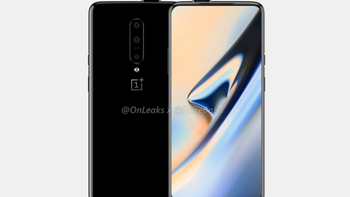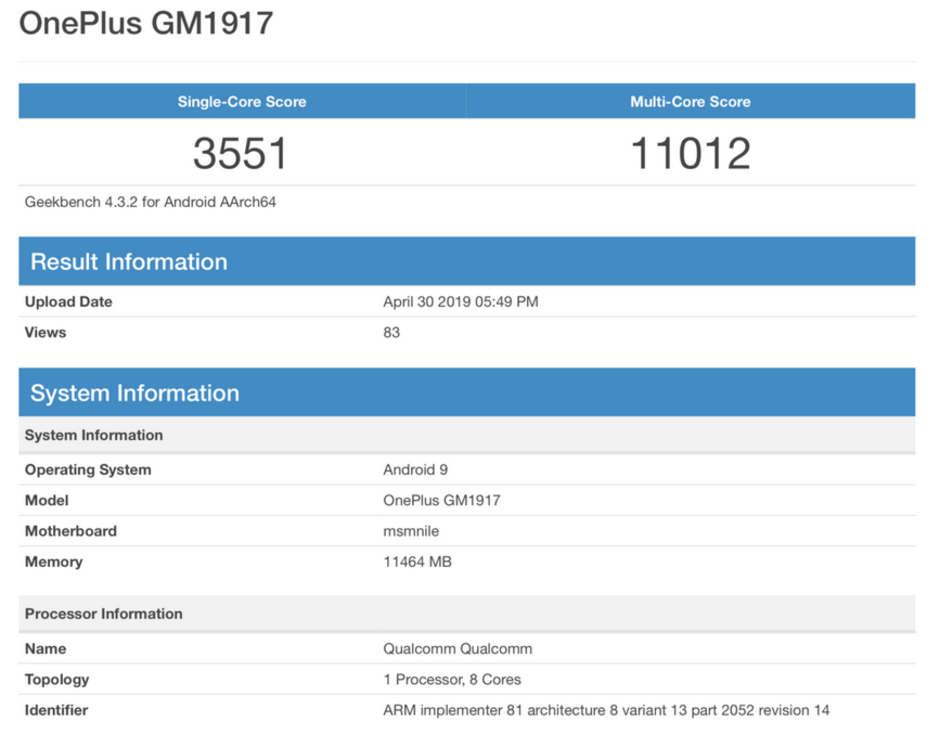Is this soon-to-be-announced handset the fastest Android phone?

Benchmark tests are run on smartphones to assess the relative performance of a handset. Manufacturers use these tests to see how a new OS build or a different chipset affects the device in question. Smartphone fans like to run these tests to see which phone or chipset is considered to be the fastest. There are quite a few benchmark apps measuring different aspects of a phone from the chipset to the browser.
One of the most popular benchmark apps is Geekbench, which measures the performance of a phone's Central Processing Unit (CPU). The fastest phone based on Geekbench tests is currently the Apple iPhone XS Max, which tallied 11,416 for its multi-core score. That phone is powered by the A12 Bionic SoC, designed by Apple and manufactured by TSMC. Just yesterday, a device called the OnePlus GM1917 was tested. According to wccftech, that model is the OnePlus 7 Pro. And if you're still unsure, the device being tested carried 12GB of RAM, which dovetails with the handset's top configuration (12GB of memory with 256GB of storage).
Based on the results of the OnePlus 7 Pro's benchmark test, the phone could launch as one of the fastest, if not the fastest, Android handsets. The device scored 11,012 on Geekbench's multi-core test and is powered by the Snapdragon 855 Mobile Platform. That tops the scores received by both the Samsung Galaxy S10+ (using the same Snapdragon 855 chipset) and the Huawei P30 Pro (powered by Huawei's home grown Kirin 980 SoC), two phones that many would consider being at the top of the Android food chain right now. These two models had multi-core scores of 10,099 and 9,745 respectively.
OnePlus 7 Pro features a 16MP pop-up selfie snapper to keep the screen notchless
The OnePlus 7 Pro is the first OnePlus handset equipped with a 1440p QHD+ curved display. The actual resolution is 1440 x 3120, which results in a tall and thin screen with a 19.5:9 aspect ratio. With a 90Hz refresh rate (60Hz is the rate on most phones), the OnePlus 7 Pro promises to provide users with a smoother viewing experience. The device will have a triple camera setup on the back featuring a 48MP sensor, an 8MP sensor with 3x optical zoom, and a 16MP sensor with an ultra wide-angle lens. There is no Time-of-Flight (ToF) sensor, which is something that several high-end phones (possibly including the iPhone 11 and iPhone 11 Max) are equipped with these days. The ToF sensor times how long it takes for infrared light to bounce off a subject and return to the phone. This data is used for 3D mapping, more accurate depth measurements, and for AR applications.

The OnePlus 7 Pro just might be the fastest Android phone
A 16MP selfie snapper pops up from the top of the phone allowing the screen to be kept notch free. This also gives the unit a high screen-to-body-ratio. Keeping the lights on will be a 4000mAh battery that will fast charge at 30W. As seen on the Geekbench test results, the OnePlus 7 Pro has the Android 9 Pie based version of OxygenOS pre-installed. Consumers will be able to purchase the phone in Blue, Gray, and Brown.
The OnePlus 7 Pro will have consumers reaching a little deeper inside their wallets and purses than past OnePlus models did. The 4G version will reportedly start at $699 for a model equipped with 6GB of memory and 128GB of storage. A variant with 8GB of memory and 128GB of storage could run you $749, and the top of the line unit that contains 12GB of memory and 256GB of storage will cost $819. A version of the OnePlus 7 Pro that supports 5G will be offered in various markets, but not in the U.S.
Both the OnePlus 7 and OnePlus 7 Pro will be unveiled on May 14th. The actual release date could be May 22nd.










Things that are NOT allowed: